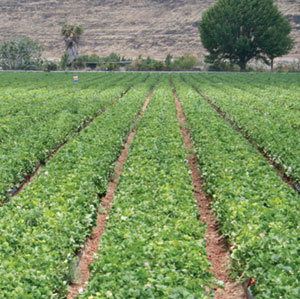.jpg)
When I was in grade school, late May always seemed like the beginning of summer. It signaled the end of the school year, introduced the onset of predictably good weather, and it was the start of strawberry season.
I learned some valuable lessons in the Oregon strawberry fields, bringing in the fruit crop every year. The elementary and secondary public schools closed down for the summer by Memorial Day so students could help the Mexican farm workers harvest the strawberries, and later the pole beans. School buses took us to the strawberry fields, and we picked from 6:00 in the morning to 3:00 in the afternoon, five days a week for about a month. Then the fields were opened to the public for U-Pick.
Early in the morning strawberry vines are still wet with dew, and at a temperature somewhere between 50 and 60 degrees, our hands got very cold. Still, it was the time of day to make the most progress. You weren’t tired yet, and your back didn’t ache.
We were paid five cents a hallock, which is a small, pint-sized box like the ones you see in grocery stores today. Six hallocks fit into a carrier – a wooden, topless box that had a tall wooden handle. By the end of the month, I could make about $125, a grand sum for a child in the 1950s. It was my spending money for the year.
We had contests to see who could fill their carrier the fastest, and there was an unwritten competition for the picker who could fill the most carriers in a day. Thirty carriers was always my goal, but as the knees, back, and feet began to hurt, my best-laid plans usually fell by the wayside.
The star picker of the field was a high school boy named Ed Scribner, who was the oldest of 12 children, most of whom also picked. I tried to keep up with him – carrier for carrier. He was my pace car. I often matched his speed for the first two or three carriers, but after that began to fall further and further behind. He was older and had the added incentive of growing the family coffers. They were literally picking for their bread and butter.
Strawberry picking is hard, dirty work, either bent over the row, one foot on either side, or on your knees in the dirt between the rows, which extend for miles, or so it seemed. I quickly learned the value of a dollar and that good physical work feels good and provides a sense of accomplishment. 
Because we picked for a local BirdsEye processing plant, not for immediate grocery store sale, we pinched the green caps off, causing strawberry juice to run freely. My fingers were permanently stained red for months after the harvest was complete. At the end of the day, we all lined up at a garden hose to rinse off our hands before getting on to the bus for the trip home.
That was when my flute practicing day began. Refreshed by a shower and clean clothes, I began harvesting the notes that had been assigned to me for the week, one at a time, just as I had the berries.
I learned to set goals in those fields; each berry I picked put me just that much closer to a full hallock, and each step forward in the row took me closer to 3:00 p.m. When I needed an extra push toward the end of the day, when I was so tired that I could barely move, I laid out the hallocks at appropriate distances on top of the vines, so that I could see the goals ahead of me.
It strikes me now, that toiling in that strawberry field was very much like learning a new concerto or etude. In both situations, you are faced with what seems like an enormous task, but you take it on one note (or berry) at a time. After a reasonable amount of time you have learned a phrase or section, or even a movement (or filled the hallock). Before you know it, you have the entire composition under your fingers.
The 1970s saw the end of grade school children working in the fields when federal guidelines banned the practice. While older generations often think that things were better in their day, younger generations usually dismiss their elders’ ramblings as irrelevant and old-fashioned. That said, I wonder where today’s students are going to learn about hard physical labor and setting and achieving goals. Where will they learn that the whole is a sum of its parts? I learned it in a strawberry field.






